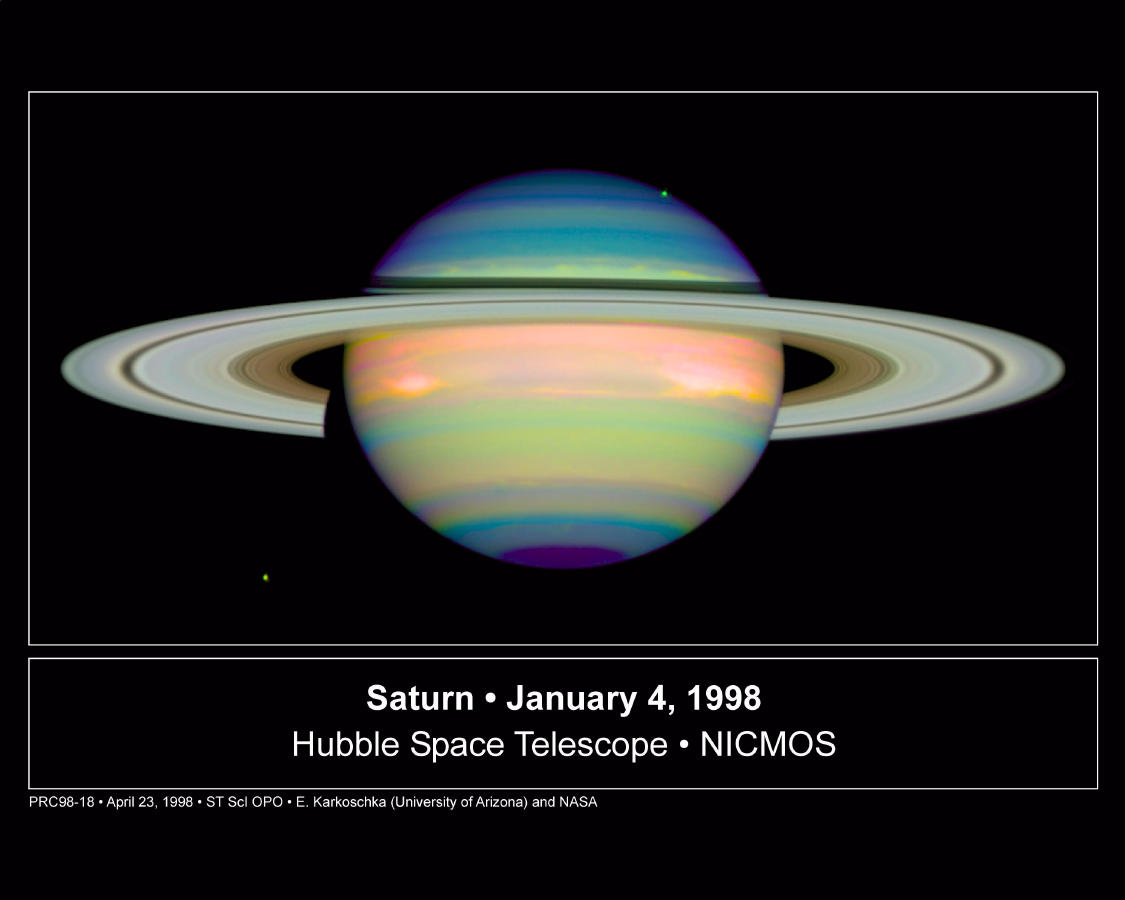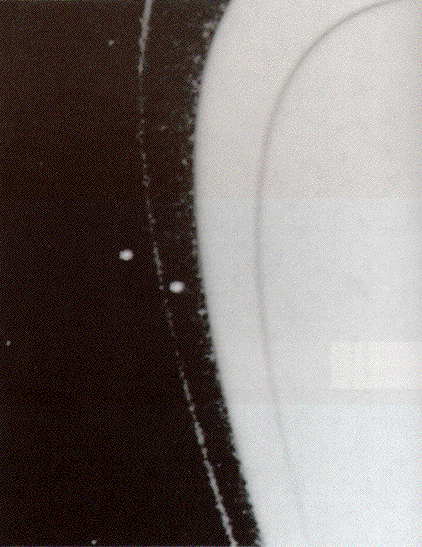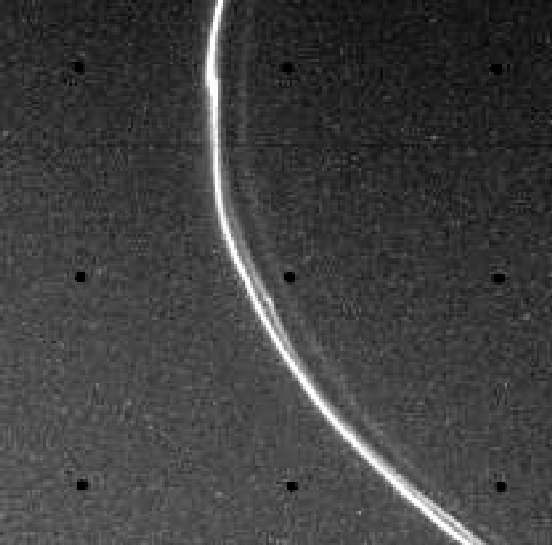 Saturn:
the ringed world. Real color? Two moons are visible.
Saturn:
the ringed world. Real color? Two moons are visible.
You note that Saturn is obviously oblate with equatorial diameter (which is parallel to the bands and rings) is about 10 % larger than the polar axial diameter.
The defined oblateness is
(R_equator-R_polar)/R_polar=0.0979624 ,
where R_equatorial is the equatorial radius and
R_polar is the polar radius.
(Cox-295).
The oblateness is caused by the centrifugal force which is high for Saturn because of its fast rotation.
Saturn's deep interior rotation period relative to the fixed stars ( sidereal rotation period) is 0.44401 days or 10.656 hours (Cox-295).
Credit: NASA.
 Saturn over 1996--2000.
Saturn over 1996--2000.
Saturn's rings orbit Saturn's equator. Both rings and equator have a tilt of 26.73 degrees to the Saturn's orbital plane: the tilt is constant---over short times anyway.
As viewed from the inner solar system, the rings will be seen edge-on twice per Saturnian year at the Saturnian equinoxes when Saturn's axis is perpendicular to the Sun-Saturn line.
-
[The Earth is approximately at the location of the Sun relative
to the outer solar system: i.e., we approximately see the
outer solar system from the vantage point of the Sun.]
Because the rings are very narrow---only about 100 m or less thick (HI-209)---the rings practically vanish at the equinoxes.
The rings are most full at the two Saturnian solstices.
Recall that the Saturnian year is 29.424 Julian years: a Julian year is exactly 365.25 standard days.
Credit: NASA/HST.
 Saturn from the HST, 1998jan04.
Saturn from the HST, 1998jan04.
This is a false color image showing infrared light reflection of Saturn.
The A and B rings are board and greyish and separated by the Cassini division (or gap): the A ring is on the outside.
The Cassini division is empty of large particles, but probably contains small dust grains similar to those that make up Jupiter's rings (HI-209).
The brown ring inside the B ring is the C ring.
Credit: NASA/HST.
 A false color image of Saturn's rings.
A false color image of Saturn's rings.
This image is based on visible and ultraviolet light.
The A, B, and C rings and the Cassini division can be identified.
The Cassini division and the C ring are shown as blue. The Cassini division is not a pure gap: there are particles of scale size perhaps 10 microns in the division. They are probably rocky dust (HI-209, SRJ-227).
Chemical and physical variations in the rings can be brought out by image enhancement techniques with pretty colors used to distingish the regions.
The rings are not simple when looked at closely---but this shouldn't have been a surprise.
For more information see NASA image caption.
Credit: NASA.
 A Voyager 2 image of Saturn's F ring and moons Pandora and Prometheus.
A Voyager 2 image of Saturn's F ring and moons Pandora and Prometheus.
The F ring is a very narrow ring with bends, kinks and bright clumps that give the illusion of a braided strand.
These unusual features are at least in part due to complex gravitational interactions with the small moons Pandora and Prometheus.
Such close, interacting moons have been called shepherd moons (SRJ-228).
Credit: NASA.
 A Voyager 1 image of Saturn's F ring.
A Voyager 1 image of Saturn's F ring.
The F ring is a very narrow ring with bends, kinks and bright clumps that give the illusion of a braided strand.
These unusual features are at least in part due to complex gravitational interactions with the small moons Pandora and Prometheus.
Such close, interacting moons have been called shepherd moons (SRJ-228).
Credit: NASA.
 The rings in false color?
The rings in false color?
The rings are ice lumps or ice-coated rocks it seems. The lumps are typically of order 1 meter, but can be much smaller or larger.
Credit: NASA.
 Voyager's last view.
Voyager's last view.
Credit: NASA.